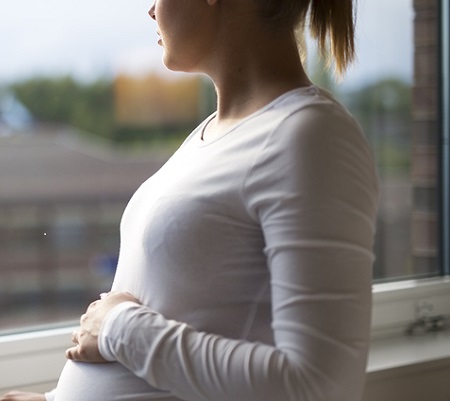
Learn how pregnancy-related pelvic girdle pain (PPGP) can affect moms-to-be and when it is the right time to call a doctor.
Fifteen times heavier—that’s how much a woman’s uterus grows during the nine months following conception. It also gets to be about 500 times its former capacity. As the uterus goes through its dramatic changes, so do its supporting structures and neighboring organs. Ligaments, those fibrous tissues that support the uterus, stretch like trampoline springs. The stomach, liver, intestines, and bladder are scooched out of the way like yesterday’s leftovers. It’s no surprise, then, that pelvic pain during pregnancy is quite common.
What is pelvic girdle pain (PGP)?
The arched structure in your hips, called the pelvic girdle, is a symphony of bones and joints that support your legs. When one of its parts has a problem, like the funky joint looseness all pregnant women get from the hormone relaxin, it can throw other instruments in the “symphony” out of tune. The ouch is known as pelvic girdle pain, or PGP (it used to be called symphysis pubis dysfunction, or SPD). This kind of pain during pregnancy is aptly called pregnancy-related pelvic girdle pain, or PPGP.
What are the symptoms?
Most women feel PPGP on the pubic mound or on one or both sides of the lower back. Some may feel it in their thighs. It can even make the perineum hurt (that’s the real estate between your vagina and anus). Often, the pain is worse when your weight isn’t balanced, such as when you’re getting out of a car, walking on stairs, or standing with one hip jutted out.
How common is it?
If you’re experiencing this kind of pelvic pain during pregnancy, don’t fret! About 1 in 5 women go through this during their 40 weeks growing another human being inside their body. Those who’ve had PPGP during a past pregnancy or who have a history of lower back pain are more likely to be among that 1 in 5. It’s a perfectly common issue.
When should you call your doctor?
Even though PPGP is common, that doesn’t make it normal. By that, we mean you don’t necessarily have to just buck up and take it like a woman. There may be some remedies that will offer relief. If you’re experiencing pelvic pain during pregnancy, it’s always a good idea to let your doctor know so you can be sure it’s just PPGP, and not some other problem, as well as learn ways to minimize the discomfort.
For questions about pelvic pain during pregnancy or tips for making your pregnancy more comfortable, contact us to schedule an appointment with a women’s health provider today.

